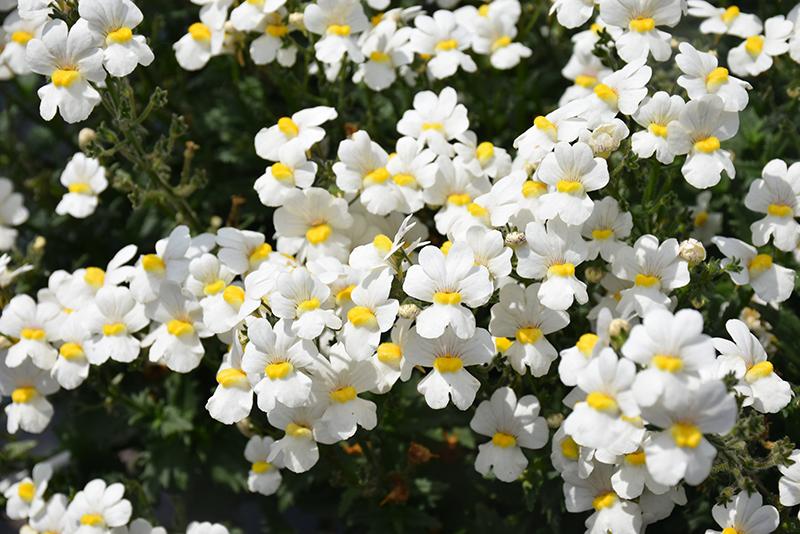One of the very best things about Tagawa’s Annuals Department is that it goes on… and on… and on some more! But sometimes choosing your favorites from hundred of varieties for sun, shade and in between can be a bit challenging at times. I get it!
So how about some help? I asked Deborah and Trisha, the two ladies at the helm of our annuals collection, to suggest ten plants that they think are terrific but just aren’t used enough in our Front Range gardens. Let’s take a look.
Strawflowers (a.k.a. “chrysocephalum”)
“Flambe Yellow” strawflowers area true sun lovers, and make a great addition to containers, borders and beds. They’re especially attractive used as a “spiller,” trailing over the sides of containers.
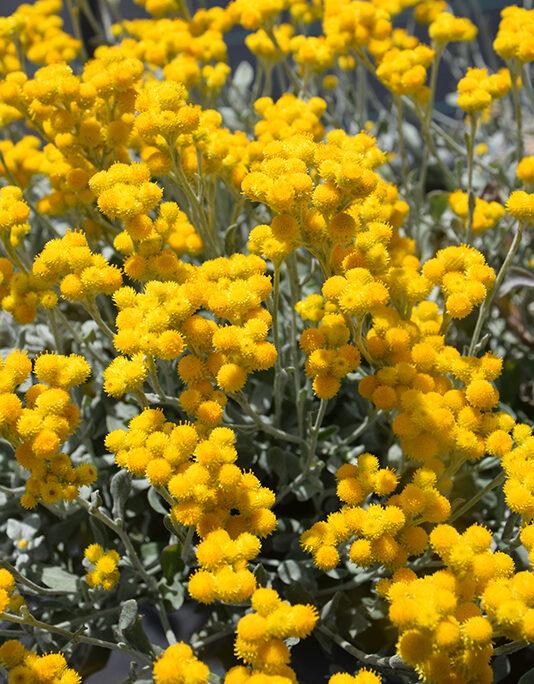
Flambe Yellow can grow as tall as 14″ and as wide as 24″. It’s a low-maintenance plant that may need occasional trimming to keep it tidy. It’s adaptable to dry or moist conditions. The tiny golden yellow button-like flowers bloom from planting to first frost.
Dusty Miller
The different varieties of this sun-loving plant are all about their foliage, not their flowers, which can easily be removed. It gets its name from the fuzzy, silvery dust-like appearance of its leaves, which are a lovely complement to beds or containers of brighter, bolder blossoms. Dusty Miller is especially attractive next to flowers of pink or purple.
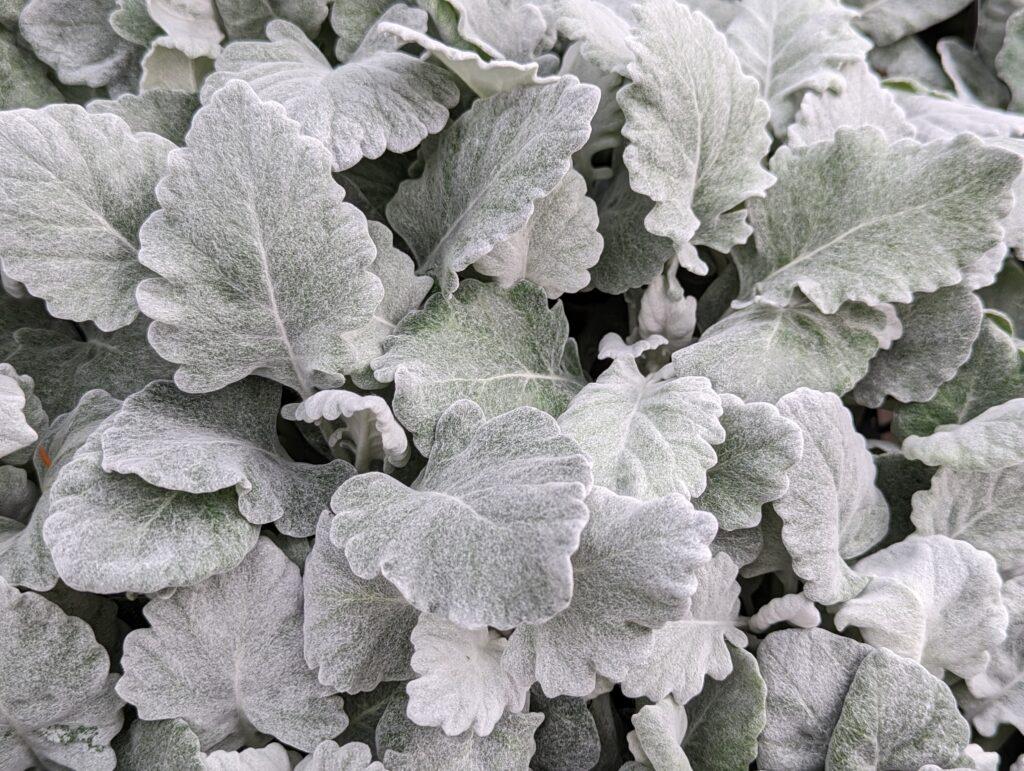
Varieties of Dusty Miller range from 8-15 inches tall. They require well-drained soil and will not tolerate over-watering. They are also frost-tolerant, and would be a lovely addition to fall plantings of pansies.
Calendulas
Calendulas or “pot marigolds” have truly stood the test of time. These plants and their big yellow or orange daisy-like flowers date back centuries, to the gardens of the ancient Egyptians and Greeks, popular in part because they are bright and beautiful, but also generally low maintenance. “Dead-heading,” or cutting off the fading flowers promptly, is one of the few requirements to keep the blossoms coming.
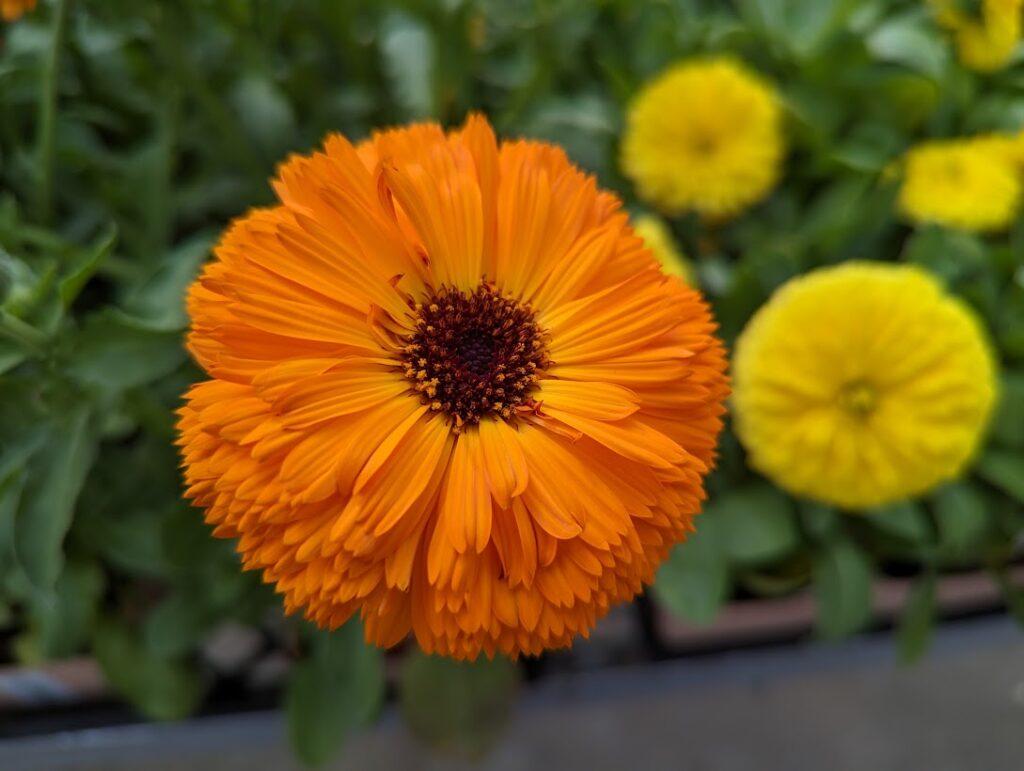
Calendulas do well in full sun or part shade and reach a mature size of 24″ tall and wide once in bloom. They flower all summer long and are right at home in beds or containers. They prefer even moisture, but will not tolerate standing water. They’re excellent for cutting gardens or drying.
Nemesias
Nemesias offers dense clusters of charming little pea-like flowers in a variety of colors including white, yellow, burgundy, crimson and blue. They’re especially easy to grow, and are happy in full morning sun in settings that aren’t too hot, but they’ll also brighten up light shade.
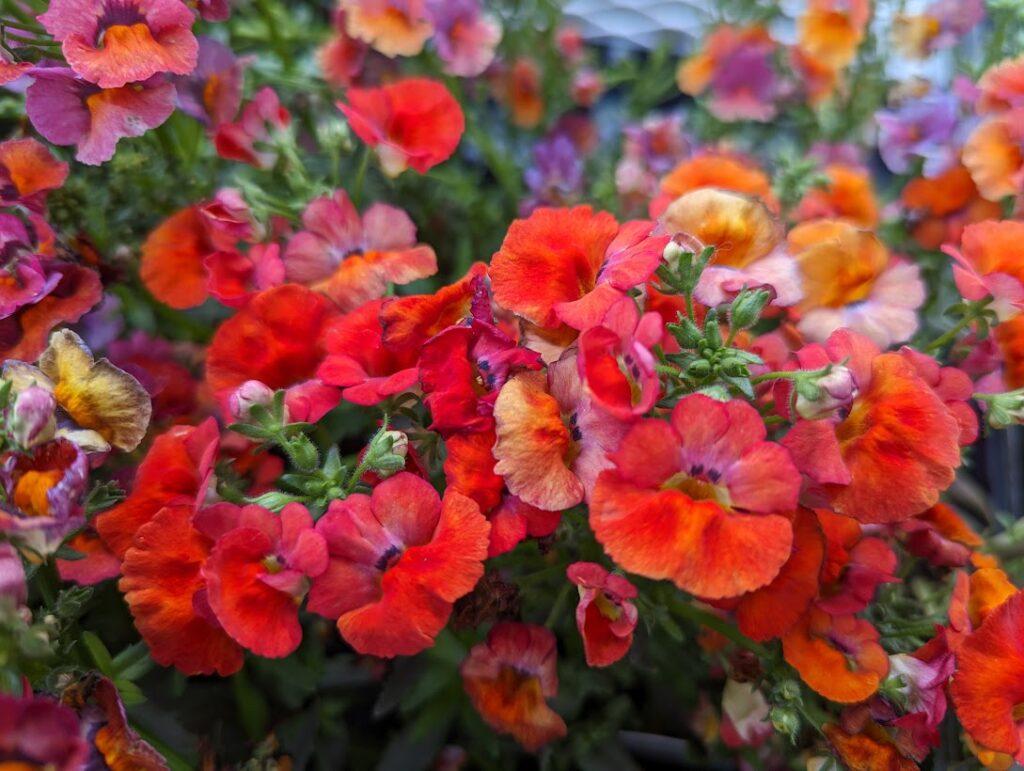
Nemesias grow to 8-12″ tall and 8-10″ wide. The plants small size makes them a great “filler” in mixed containers. They’re also good for planting in beds and borders, and are generally frost tolerant.
Nemesias does best rich, slightly moist but well-drained soil. Regular maintenance should include deadheading and occasional trimming back of any untidy growth.
Dianthus
The fragrant flowers of dianthus or “pinks” have strong spicy hints of clove… just one of the traits that’s made them popular in European cottage gardens dating back to Queen Victoria’s time and beyond. They come in a variety of colors ranging from white to pink to burgundy and several bi-colors. The size of dianthus can vary a lot, depending on the variety. They range from 6 to 30″ tall and wide. They’ll do well in full morning sun or light shade.
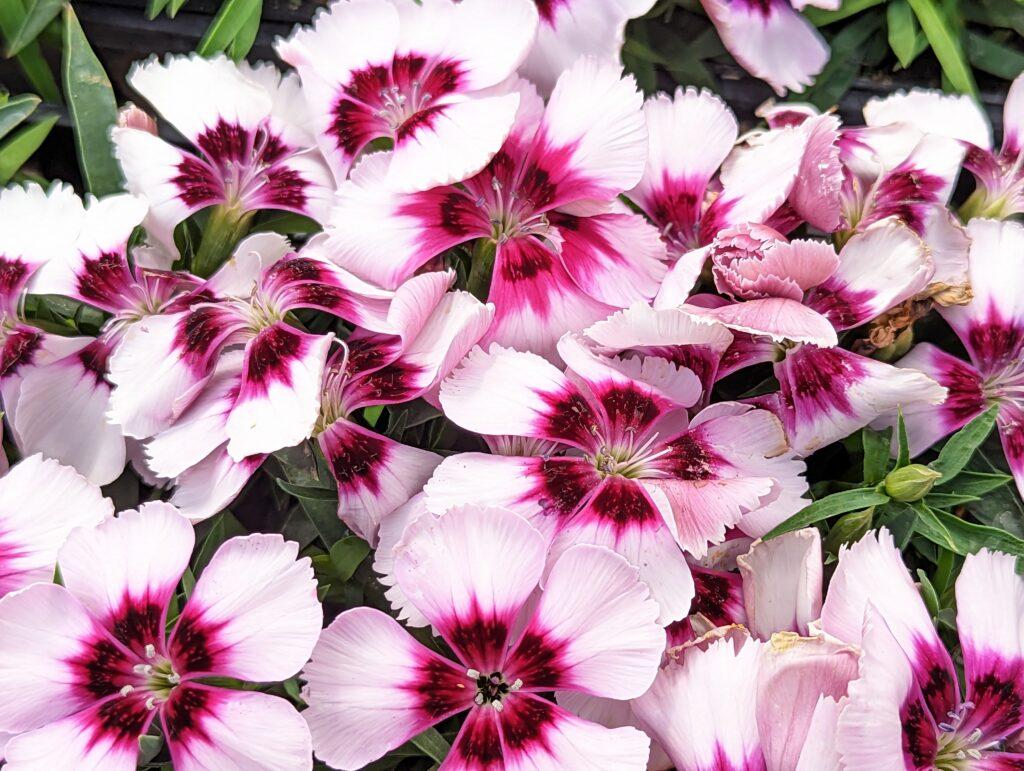
The fringed flowers of Dianthus sit on top of distinctive silvery-green grass-like foliage. Dianthus are heavy bloomers and need regular deadheading to keep the blossoms coming. Flowering may slow down in the heat of summer. The flat petals of dianthus and their rich fragrance will draw pollinators including bees and butterflies.
Regal geraniums
These exotic-looking plants are also known as “Martha Washington” geraniums. Sadly, the First Lady never grew them. They were named in her honor in the early 1900’s when the first varieties arrived from South Africa. Regal geraniums aren’t as hardy as the more robust geraniums that so many gardeners love. They are definitely best suited for locations with morning sun only, or bright afternoon shade.
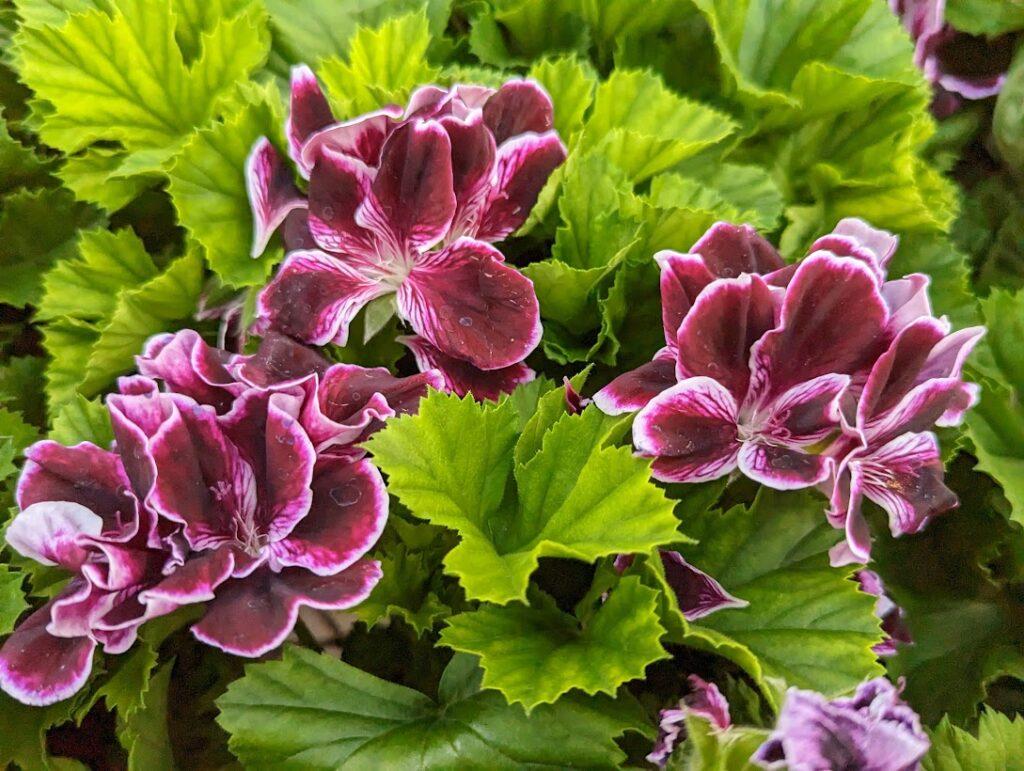
Their beautiful ruffled, bi-color blossoms are their strong suit, coming in shades of pink, red, burgundy and lavender. Their soft, saw-toothed foliage is an asset, too. Regals can perform beautifully in beds or containers. Their flowering may slow down in the heat of summer.
Browalia
Like a lot of gardeners, I can never include enough blue in the big containers on my deck. Another name for browalia is “Amethyst flower,” which gives a great clue to the color its elegant flowers have to offer. It’s definitely on my “must-have” list for this summer.
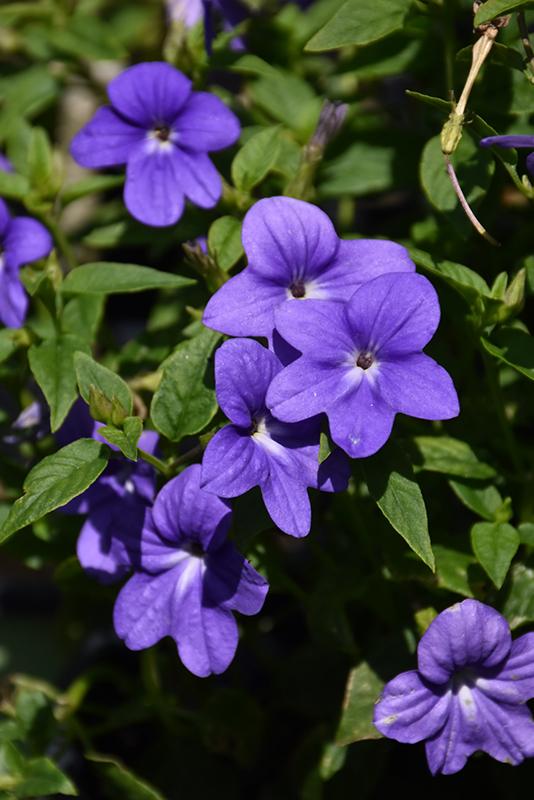
Browalia can take some soft morning sun, but it’s especially well-suited for bright shade. It matures to 14″ tall and wide, and grows in a somewhat mounded form. The star-shaped flowers of purple/blue bloom from spring to fall. It prefers average to moist conditions and should never be left to dry out.
Kong coleus
This shade-loving annual takes me back to my college days when coleus was the rage as a houseplant… long before the sun-loving coleus were on the scene. The size of the vibrant leaves of Kong coleus give it the name “king of coleus,” with leaves up to six inches long. Its stature is worthy of the name, too, since it can grow to more than two feet tall!
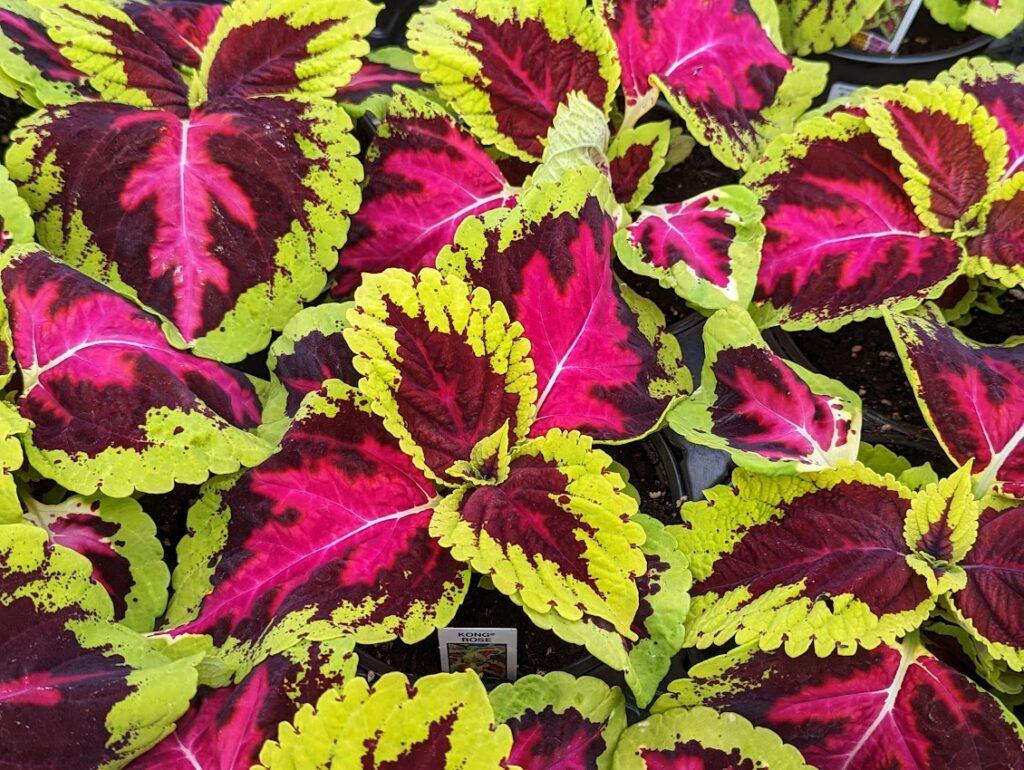
Coleus is suited for bright shade only… no direct sun. It should be kept evenly moist in well-drained soil. Small flower spikes should be removed as they appear so they don’t detract from the foliage, which is the real value of Kong. Pinch the top growth frequently to promote a full, bushy plant.
New Guinea impatiens
Why not brighten up your shady settings with New Guinea impatiens? This annual has so many things going for it! Big blossoms in shades of white, pink, salmon, rose and red… not to mention beautiful foliage in green or bronze tones… even bi-colored in some varieties.
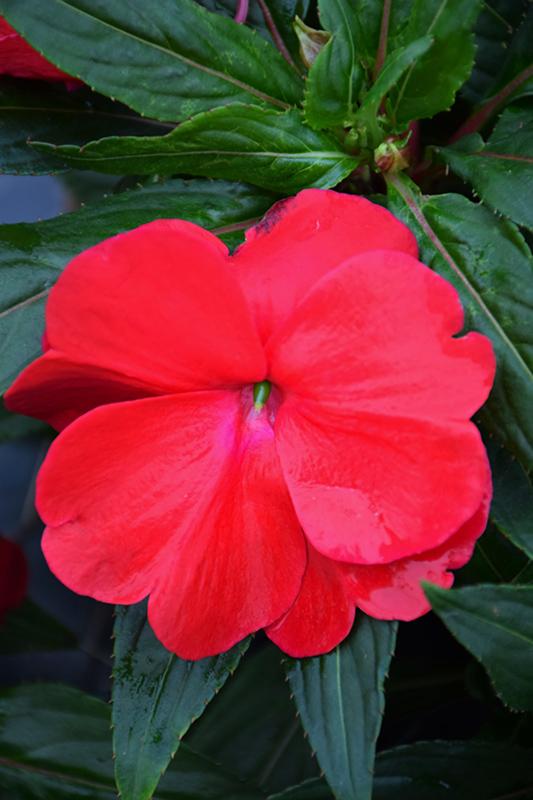
New Guinea impatiens have an upright, mounding habit, making them perfect for hanging baskets and containers. Mature size ranges from 8-12″ tall and 9-12″ wide. They prefer evenly-moist but never soggy soil.
Fuchsia
To me, fuchsia seems an especially feminine, romantic plant, with its exotic flowers of pink, white, lavender, rose and purple. There’s really nothing else quite like it in Tagawas Annuals Department.
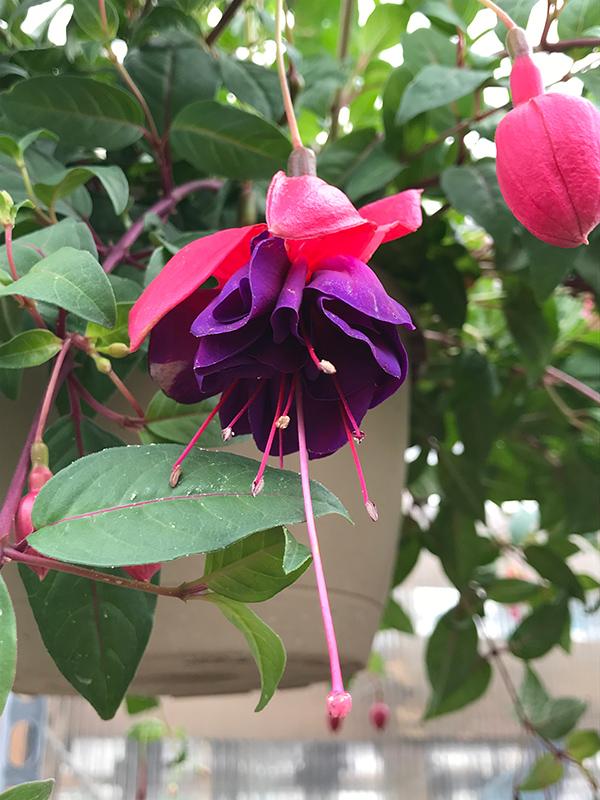
Fuchsia has something of a royal pedigree. It was first discovered by Europeans around 1700 in the Dominican Republic during a trip authorized by Louis XVI, husband of Marie Antoinette.
The various varieties of fuchsia generally grow to about 12″ tall and up to 24″ wide. They are definitely meant for shady locations with evenly moist, but never soggy soil. They bloom best from mid-summer to early fall. Be advised: watch out for aphids on fuchsia. They seem to love them, too!
Stop by Tagawa Gardens to talk to our Annuals experts to learn even more!
